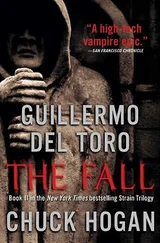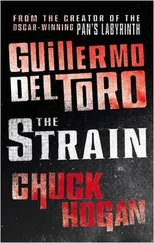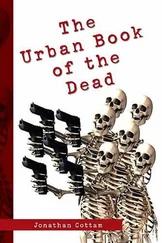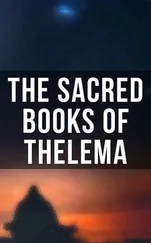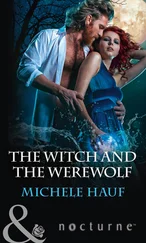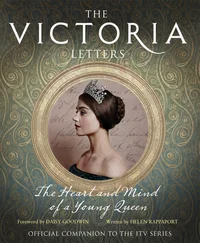Victor Pelevin - The Sacred Book of the Werewolf
Здесь есть возможность читать онлайн «Victor Pelevin - The Sacred Book of the Werewolf» весь текст электронной книги совершенно бесплатно (целиком полную версию без сокращений). В некоторых случаях можно слушать аудио, скачать через торрент в формате fb2 и присутствует краткое содержание. Жанр: Старинная литература, на английском языке. Описание произведения, (предисловие) а так же отзывы посетителей доступны на портале библиотеки ЛибКат.
- Название:The Sacred Book of the Werewolf
- Автор:
- Жанр:
- Год:неизвестен
- ISBN:нет данных
- Рейтинг книги:4 / 5. Голосов: 1
-
Избранное:Добавить в избранное
- Отзывы:
-
Ваша оценка:
- 80
- 1
- 2
- 3
- 4
- 5
The Sacred Book of the Werewolf: краткое содержание, описание и аннотация
Предлагаем к чтению аннотацию, описание, краткое содержание или предисловие (зависит от того, что написал сам автор книги «The Sacred Book of the Werewolf»). Если вы не нашли необходимую информацию о книге — напишите в комментариях, мы постараемся отыскать её.
The Sacred Book of the Werewolf — читать онлайн бесплатно полную книгу (весь текст) целиком
Ниже представлен текст книги, разбитый по страницам. Система сохранения места последней прочитанной страницы, позволяет с удобством читать онлайн бесплатно книгу «The Sacred Book of the Werewolf», без необходимости каждый раз заново искать на чём Вы остановились. Поставьте закладку, и сможете в любой момент перейти на страницу, на которой закончили чтение.
Интервал:
Закладка:
I almost snorted.
‘In addition to that, the shape of the pupils is transformed and the superciliary arches become slightly more pronounced, but you would probably not be surprised to meet one of these creatures on the street . . .’
‘Absolutely fantastic,’ said E Hu-Li.
Lord Cricket pointed to the cogwheel located in the centre of the tail.
‘The displacement of the kundalini to the second infra-chakra produces a far more spectacular effect. Here we are dealing with the absolutely classic case of a “werewolf”. The were-creature is not simply transformed into a wolf. He is, so to speak, a wolf writ large. He is taller than a man and incredibly strong, with huge jaws full of teeth, but he walks on his hind legs like a man - although if he wants, he can run on all four legs. The descriptions in folklore are fairly accurate, since this has always been the most widespread form of were-creature in Europe. I shall only remark upon one curious detail. It is widely believed that transformation into a werewolf is associated with a specific phase of the moon or the onset of twilight. And in the folk imagination, it comes to an end with the dawn, since evil spirits cannot bear the sunlight. In actual fact, darkness and light have nothing to do with the matter. But another, correct, observation has been made: the transformation into a werewolf is short-lived, since the infra-chakra number two is a point of unstable equilibrium, where the kundalini cannot be located for a long period of time . . .’
‘But what does that mean,’ asked E Hu-Li, ‘stable equilibrium, unstable equilibrium?’
Lord Cricket leaned down over his laptop.
‘Just a moment,’ he said, ‘I have a slide on that subject here somewhere . . .’
An image of Stonehenge appeared on the screen, followed by an advertisement in various shades of green for a trailer home with a vase of narcissi pasted lovingly, but not very professionally in its window, and finally a black sine curve.
‘There,’ said Lord Cricket, ‘please pardon the confusion.’
There was a blue ball lying in the hollow of the curve, and a red ball poised on its crest. The balls had little arrows of the same colours pointing away from them to indicate their direction of movement.
‘It’s very simple,’ said Lord Cricket. ‘Both balls are in a state of equilibrium, but if you move the blue ball, it will return to the point from which it started. That is stable equilibrium. However, if you move the red ball, it will not return to that point and will roll downwards. That is unstable equilibrium . . .’
‘I have a question,’ said Alexander. ‘May I?’
‘By all means.’
‘Why is the first ball blue, and the second one red?’
‘I beg your pardon?’
‘And the arrows are the same colours. Why those two colours in particular?’
‘But what difference does it make?’
‘No difference at all,’ said Alexander. ‘I’m just curious. Perhaps you haven’t heard, but in Russian the word for blue - “goluboi” - means “homosexual”. I’ve been wondering for a long time about why the arrows on all the campaign maps are always blue and red. As if history consisted primarily of a struggle between the queers and the communists. I thought perhaps you might know?’
‘No,’ Lord Cricket replied politely, ‘I don’t know why precisely those two colours are used. May I continue?’
Alexander nodded. The tail with the black infra-chakras appeared on the screen again.
‘As I have already said, the second position, at which the transformation into a wolf takes place, is unstable. If we superimpose the curve on the drawing, you can see that the neighbouring positions - numbers one and three - must be stable. Number one is the position of the fox, which we have already discussed. You probably have a question about position number three?’
‘Yes,’ said E Hu-Li. ‘What is it, Brian?’
‘I have already mentioned that the three infra-chakras of a were-creature are located symmetrically to the lower three chakras of a human being. The final infra-chakra, located at the very tip of the tail, is a mirror reflection of the Manipura, located between the navel and the heart. At this point the central channel is interrupted. The kundalini cannot move on to the upper chakras unless the region around the Manipura, known as the “ocean of illusions” is charged with the energy of a genuine spiritual mentor. According to the principle of Hermes Trismegistus, the same applies to the were-creature’s infra-chakras. In order to move the kundalini to its lowest possible point, an involtation of darkness is required, the spiritual influence of a superior demonic entity that fills the so-called “desert of truth” - the rupture in the shadow central channel - with its vibrations . . .’
‘And what exactly is a superior demonic entity?’ I couldn’t help asking.
Lord Cricket smiled.
‘That depends on your personal contacts,’ he said. ‘The possibilities here are different for everyone . . . And so, we have come to the end of what I am permitted to tell you. I can only add one thing: position number three, the so-called abyss, is the point at which the transformation to the super-werewolf takes place.’
‘And has anyone ever succeeded in completing that manoeuvre? ’ I asked.
‘According to certain sources, in 1925 one of your compatriots, the anthroposophist Sharikov, succeeded. He was a disciple of Dr Steiner, and a friend of Maximilian Voloshin and Andrei Bely. As far as we know, Sharikov was taken into the Cheka, and the whole business was kept top secret. And the secrecy was taken very seriously: suffice it to say that the manuscript of A Dog’s Heart - a story by the well-known writer Bulgakov that was based on rumours about the event - was confiscated. After that no one ever saw Sharikov again.’
‘But what exactly is a super-werewolf? Alexander asked.
‘I don’t know,’ said Lord Cricket. ‘At least, I don’t know yet. But you have no idea how impatient I am to find out . . .’
‘What are you doing wearing an evening dress first thing in the morning?’ Alexander asked. ‘And high heels?’
‘Why, don’t they suit me?’
‘Black suits you very well,’ he said, and cautiously rubbed his cheek against mine. ‘But then, so does white.’
Instead of kissing we sometimes used to rub our cheeks together. I found this manner of his funny at first - there was something childish, puppyish about it. Then he confessed that he was sniffing my skin, which had an especially tender smell just behind my ear. After that, I used to experience a vague displeasure during this procedure - I had the feeling that I was being used.
‘Are we going to the theatre?’ he asked.
‘Something a bit more interesting than that. We’re going hunting. ’
‘Hunting. But who are we going to hunt?’
‘Chickens,’ I declared proudly.
‘Are you feeling hungry?’
‘That’s not funny.’
‘Then why do you want to go hunting chickens?’
‘It’s just that I want you to get to know me a little bit better. Get ready, we’re going out of town.’
‘Right now?’
‘Yes,’ I said, ‘only first read this. Someone has a commercial proposition for you.’
I handed him a print-out of an e-mail letter I’d received from E Hu-Li that morning.
Hi there, Red,
I tried to reach you on the mobile, but the voice said that the ‘number is temporarily blocked’. Looks like your sponsor in uniform isn’t very generous . . .
Pursuant to our meeting (so charming!) of yesterday’s date, it appears that when we left our boys alone after Brian’s lecture and started reminiscing about old times, they had a quarrel about art. Let me tell you what happened. Brian showed Alexander photographs of some works that he is planning to exhibit jointly with the Saatchi gallery. First and foremost among them is the installation ‘The Liberation of Babylon’, which uses a model of the Gates of Ishtar as the background for Scottish bagpipers parachuting in with their kilts hiked up. These plaster figures convey their own state of sexual excitation to the viewer, attacking his perception and transforming him into another object put on display. In this way, the observer is made aware of his own physical and emotional presence in the space distorted by the gravity of that artistic object . . . Alexander liked ‘The Liberation of Babylon’, which cannot be said for all the other pieces.
Читать дальшеИнтервал:
Закладка:
Похожие книги на «The Sacred Book of the Werewolf»
Представляем Вашему вниманию похожие книги на «The Sacred Book of the Werewolf» списком для выбора. Мы отобрали схожую по названию и смыслу литературу в надежде предоставить читателям больше вариантов отыскать новые, интересные, ещё непрочитанные произведения.
Обсуждение, отзывы о книге «The Sacred Book of the Werewolf» и просто собственные мнения читателей. Оставьте ваши комментарии, напишите, что Вы думаете о произведении, его смысле или главных героях. Укажите что конкретно понравилось, а что нет, и почему Вы так считаете.




